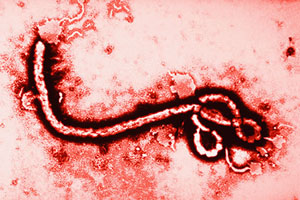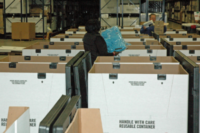 The lack of available time to train staff, and uncertainties about certifications to ship infectious substances, are the top challenges facing hospitals undertaking Ebola preparedness and safety precautions, according to a recently conducted survey by EH&E, Inc., a leading provider of environmental and engineering consulting services.
The lack of available time to train staff, and uncertainties about certifications to ship infectious substances, are the top challenges facing hospitals undertaking Ebola preparedness and safety precautions, according to a recently conducted survey by EH&E, Inc., a leading provider of environmental and engineering consulting services.
“Nearly half (48%) of the hospitals responding to the survey stated that ‘available time for patient care staff’ was the most important limitation in providing hands-on Ebola virus disease training to clinical staff, including hands-on PPE donning/doffing procedures,” according to Bryan Connors, MS, CIH, Healthcare Practice Director, EH&E.
Another 20% cited money or lack of qualified staff and internal resources to support training as their key limitation.
EH&E surveyed hospital environmental health and safety (EHS) managers, risk managers, and facilities mangers in 41 U.S. hospitals. The “EH&E Hospital Ebola Preparedness Survey” focused on issues relating to personal protective equipment (PPE) training, Ebola-specific training, and hazardous waste management. The survey was conducted in late October.
Recommendations
“EH&E recommends selecting a small number of staff to be highly trained in Ebola preparedness and safety precautions. This group may include a select number of nurses, physicians, respiratory therapists, ‘safety monitors,’ and environmental services staff to participate in initial and periodic retraining sessions, including PPE donning and doffing procedures,” said Bryan Connors, MS, CIH, Senior Scientist and Healthcare Division Practice Leader, EH&E, Inc.
“The ‘safety monitor’ role is critical to staff safety, which works like a ‘Buddy System’ assuring front line clinical staff don and doff PPE appropriately and any safety issues are addressed in real time,” Connors noted.
“Of course, the strategy on how many staff to train will be dependent on many factors, including the type and size of the hospital,” he added.
Hazmat shipment training is vital
The survey also identified a potential vulnerability in preparedness as more than half (55%) of hospitals reported not having or not knowing if they have staff trained to ship Category A Infectious Substances per IATA and DOT — such as patient specimens being sent for Ebola diagnosis or that are confirmed positive for Ebola.
“Workflow planning and procedures for Category A Infectious Substances shipments must be in place well in advance of their need,” said Connors. “This type of training can take upwards of eight hours to complete and must be properly documented. In practice, ‘on demand’ training is simply not an option.”
Overall, an overwhelming majority of hospitals reported meeting (76%) or exceeding (12%) CDC guidelines, with 12% replying they had not yet met requirements.
Majority of hospitals are conducting Ebola training
Nearly two-thirds (64%) of hospitals in the survey reported that they are actively conducting Ebola training, including specific PPE training. The reminder had either conducted training for other infectious diseases (21%) or training in Ebola preparedness but without training on specific PPE donning and doffing procedures (10%). Just 5% of hospitals reported not conducting Ebola specific training to date — at least as of October 21.
“It is highly likely that while training has increased in all categories since the survey was taken — the challenges remain as hospitals work to ensure not only the quality of care for patients, but the safety and well-being of caregivers and the public,” Connors noted.
A summary of the survey results, “EH&E Hospital Ebola Preparedness: Survey Results,” is available to download from http://www.eheinc.com/ebola_survey.htm. Details are available by request by contacting Bryan Connors by phone 1-800-825-5343 or email contact@eheinc.com.
About EH&E
EH&E (http://www.eheinc.com) has provided an extensive range of environmental and engineering consulting services for over 25 years. Our team consists of more than 60 experts with an outstanding record of providing business-focused solutions for issues that affect the built environment. EH&E has a depth of knowledge and credibility unmatched in the industry and our wealth of readily-accessible information has become a powerful resource for our clients.


